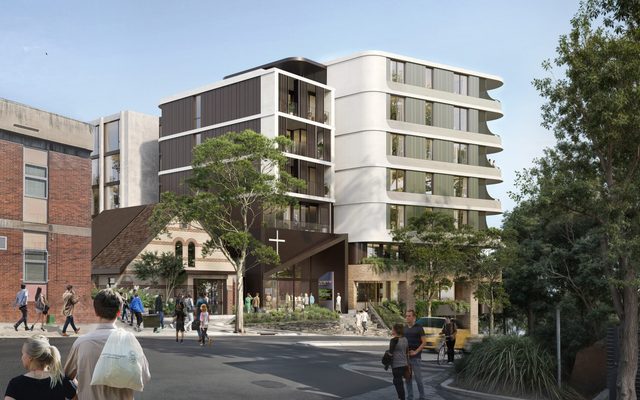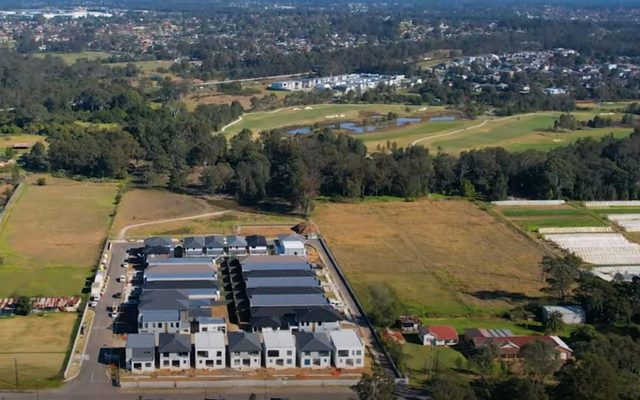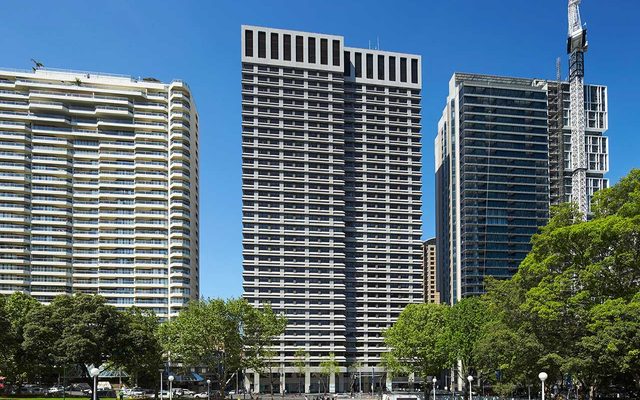This article is from the Australian Property Journal archive
AS Australia grapples with a housing crisis and a severe lack of housing, spending on new home construction has plunged to its lowest level in 36 years – while spending renovation has been booming.
New analysis from KPMG Australia paints the difficult picture for the housing market, which mid-year saw the beginning of the Albanese government’s National Housing Accord, aiming to deliver 1.2 million “well-located” homes over five years.
KPMG’s data showed that, adjusted for inflation, spending on new private residential construction in 2023-24 was 14% lower than five years earlier. The slide means that on a per capita basis, new private residential construction spend is at its lowest level since 1987-88.
Figures from the Australian Bureau of Statistics yesterday showed total residential construction work down lifted 1.8% over the September quarter, and 0.1% year-on-year, to $23.37 billion.
Commercial construction totalled $15.27 billion in the quarter, down 1.0% over the quarter but 1.7% higher in annual terms.
Engineering lifted 2.6% and 6.0% respectively to $34.7 billion.
The KPMG data showed that renovation spending has climbed from 34.2% of total residential construction spend in 2018-19 to 40%.
“For every nail hammered and brick laid in residential construction 40% of it is going into renovating a pre-existing home,” KPMG urban economist Terry Rawnsley said.
“This indicates that there is not enough money and resources being attracted to expanding the housing stock.
“More straightforward planning processes and lower risks for builders make renovating existing homes a favoured option over adding multiple homes on the same block.”
New private residential construction also includes one-for-one replacements, where a detached home is demolished and replaced with a single new home. KPMG analysis indicates that almost 10% of new private residential construction spending is on one-for-one replacements.
Victoria has the highest one-for-one replacement rate at 12.6% of new residential construction, followed by Western Australia at 9.1%, and NSW at 8.7%.
“The boom in one-for-one replacements has been heavily influenced by COVID-19, when the fall in international migration dramatically reduced demand for new dwellings, while lower interest rates, a surplus of construction labour and a desire for home upgrades during lockdown lead to a jump in activity,” the report said.
NSW and Victoria both saw one-for-one replacements at around 20% of all new private residential construction in 2021-22, in addition to the spike in renovations during this period.
Inner city and coastal locations are seeing the most renovation activity, with high property values in high amenity coastal areas making one-for-one replacements more commercially feasible. In the inner city, restrictive planning and heritage regulations are also a factor in preventing more than one dwelling from being added to a block.
“There needs to be planning settings which encourage investment in increasing housing density, rather than preference for one-for-one replacements,” Rawnsley said.
The NSW government is currently working on the Transport Oriented Development program, which will see zoning changes within 400 metres of around 39 train stations allowing for higher-density housing close to public transport, shops and services, while the Victorian government last month unveiled plans for 50 new train and tram zone activity centres with a similar approach to housing.
A new report from CoreLogic and Archistar, identified some 1.3 million sites across the country that could deliver more than three million strata units across the capital cities at a faster clip than higher-density housing being pushed forward by state governments.
The average number of potential units per identified site was just 2.5 – the analysis excluded high-rise and mixed-use opportunities – and 57% of the sites are within two kilometres of an existing train station.
“Homeowners are absolutely entitled to renovate their homes to add value to their investment and to ensure existing housing stock is maintained,” Rawnsley said.
“However, shifting some of the labour and materials away from renovations and one-for-one replacements towards the construction of new housing stock can help to relieve current housing shortages.”
Brisbane is facing a potentially severe undersupply of apartments in the coming years. Charter Keck Cramer data shows that there is a requirement to build between 6,000 to 8,000 apartments each year to house Brisbane’s forecast 1.6% per annum population growth to FY28, and current trends suggest that only around 3,000 will be built annually over the next few years, with a major contributor being competition for labour and materials with the $7.1 billion infrastructure project pipeline for the 2032 Olympic and Paralympic Games.
KPMG’s data showed that Brisbane recorded the highest spend – including almost $900 million on renovations – given it is by far the largest LGA in Australia.
During 2022-23, the value spent on renovations in NSW exceeded spending on new dwellings, while spending on one-for-one replacement projects almost doubled during the same period. New dwellings spend has almost returned to 2019-20 levels in FY24.
The top 10 renovation spending local government areas in NSW account for 46% of all alterations and additions in NSW. Coastal locations like Northern Beaches and Sutherland Shire are driven by investment in ocean-facing properties, while inner-city locations such as Sydney and the inner west highlight investments in older, often heritage-listed properties.
In Victoria, $19.3 billion was spent on new builds while $13 billion was spent on renovations and one-for-one replacements. Renovation spending did see an increase between 2022 and 2023 but has now returned to pre-COVID levels.
Locations within 10 kilometres of the Melbourne CBD, such as Boroondara and Stonnington, reflect investments in properties with restrictive planning controls and often heritage overlays. Greater Geelong and Merri-bek have much lower shares of renovations, reflecting the high levels of new residential building taking place in these LGAs.
Unlike the other major states, Western Australia has seen a decline in renovations since 2019-20, while spending on new building has steadily increased.
“There is simply a lot more space in Perth to build new housing in desirable locations,” Rawnsley said.
“In comparison, land is far scarcer in the east coast cities, so homeowners are much more likely to knockdown rebuild or commit to major renovations rather than starting from scratch.”




